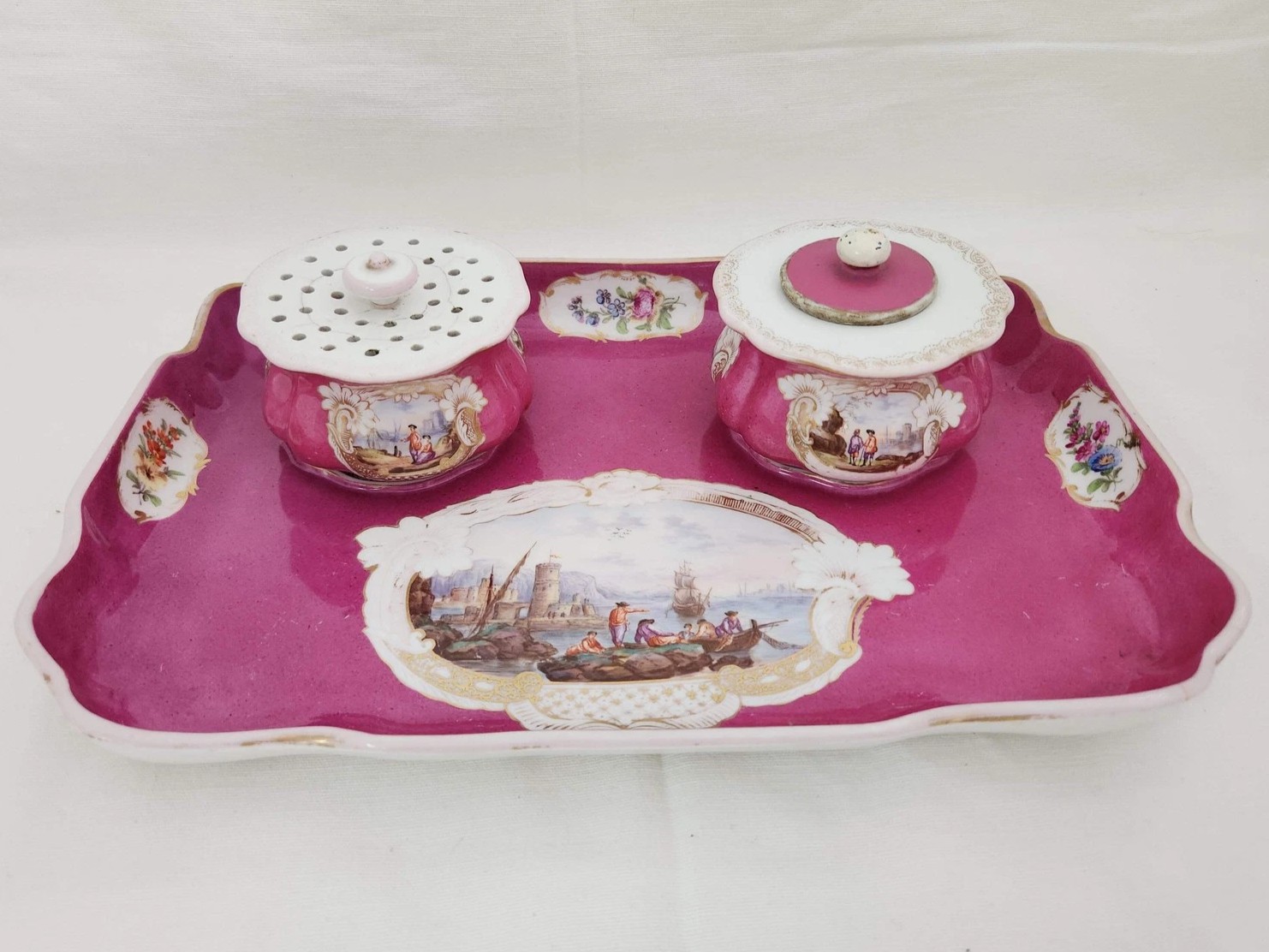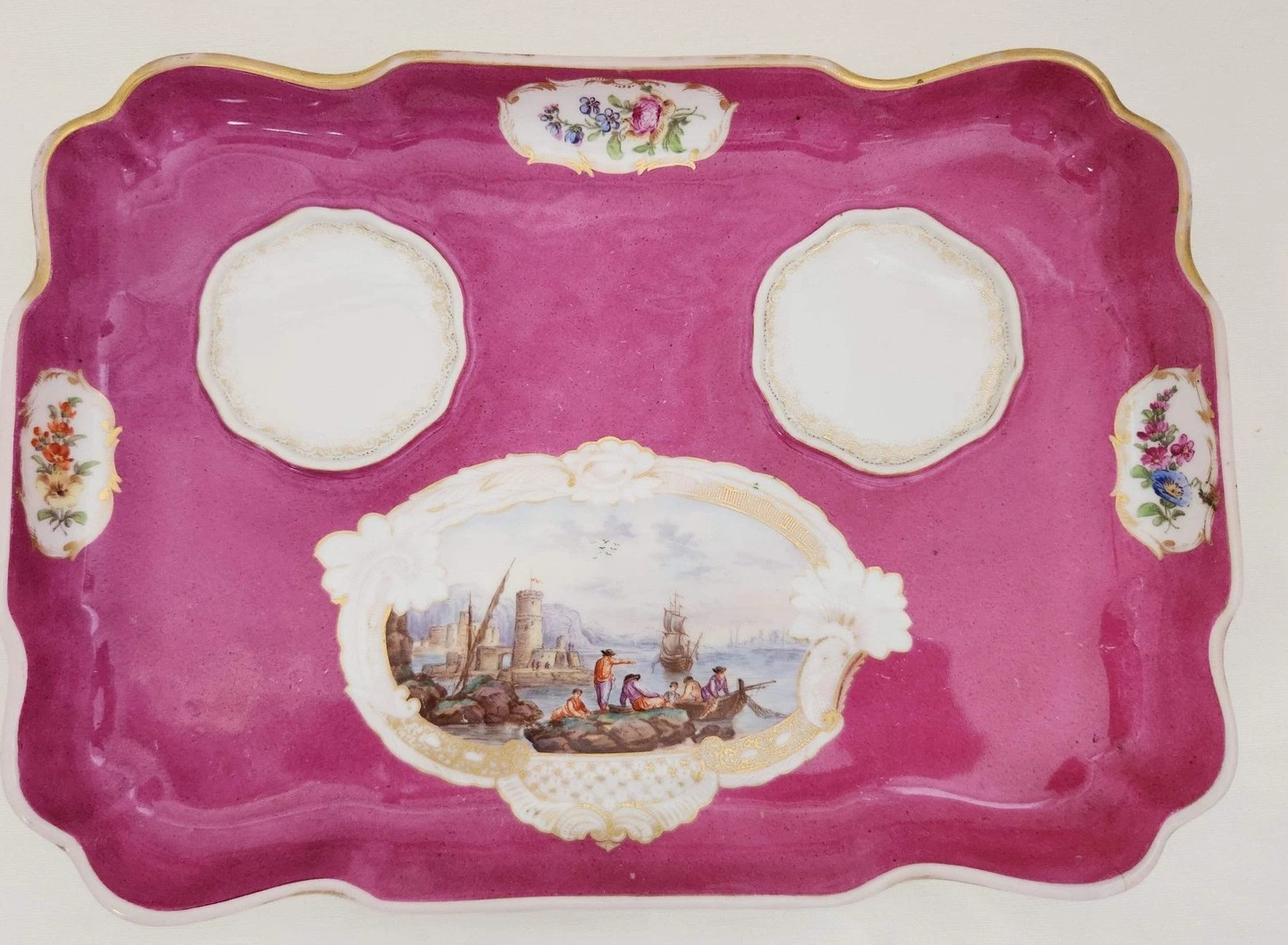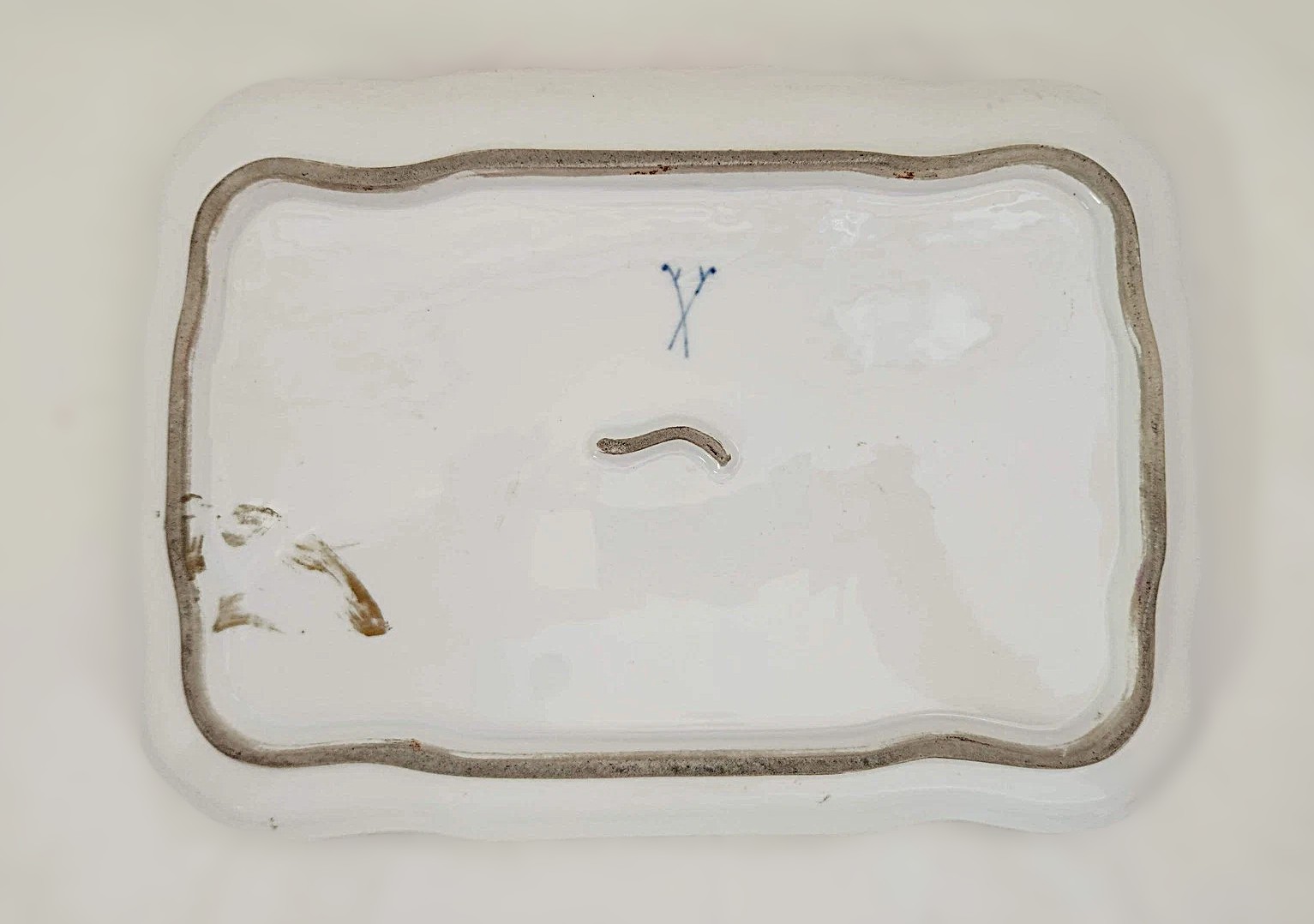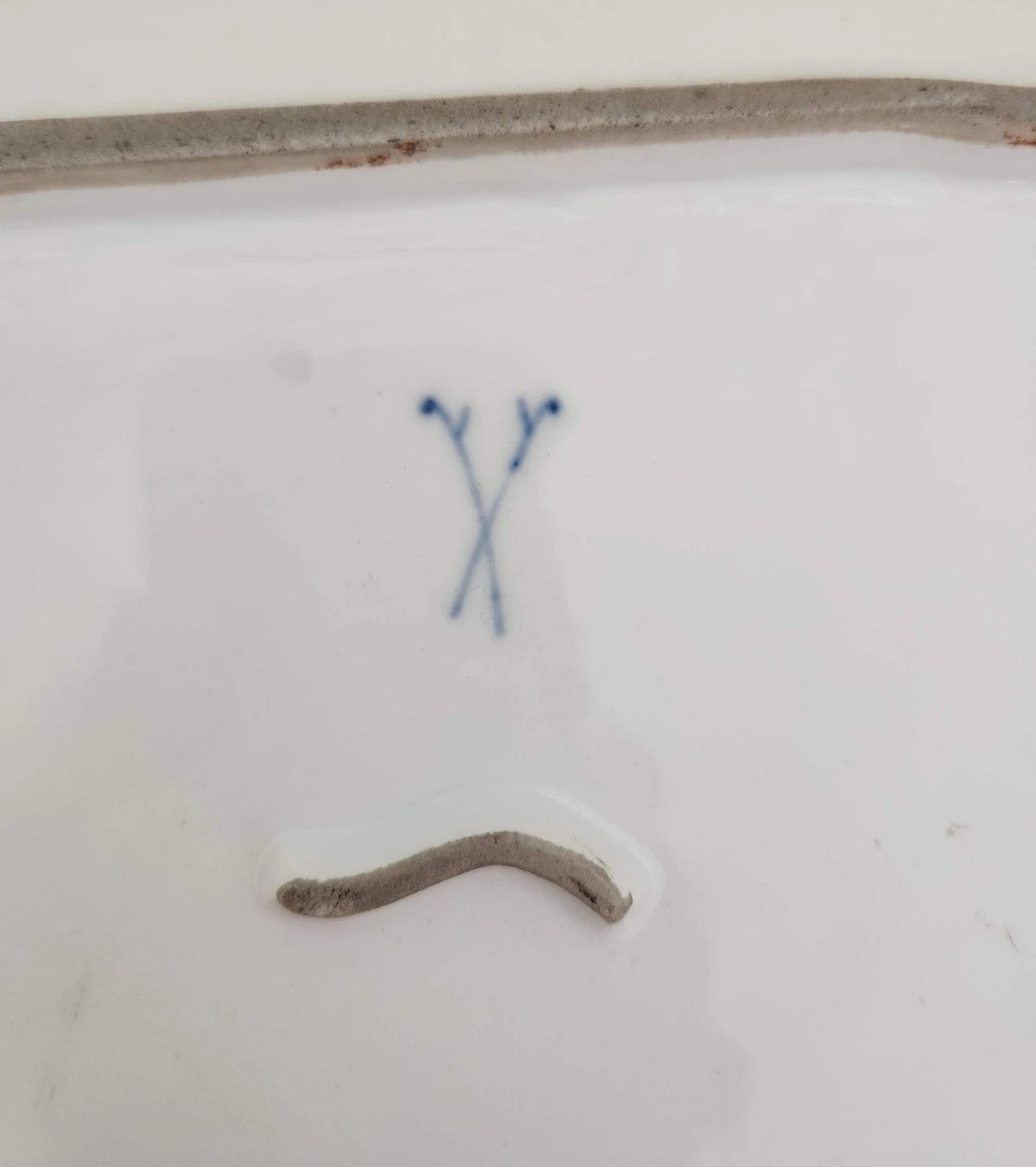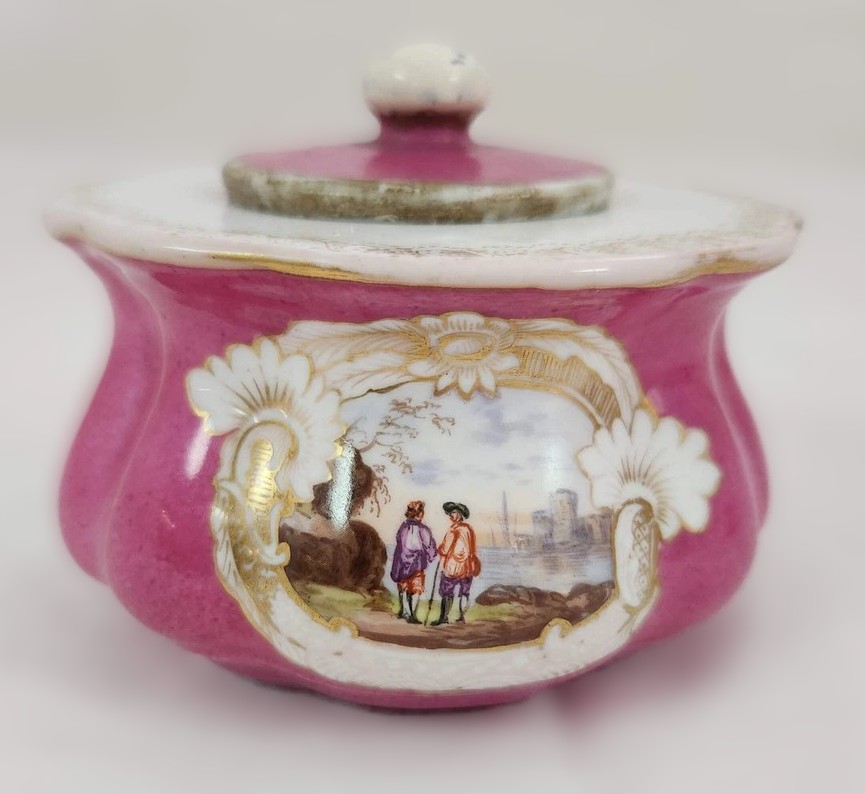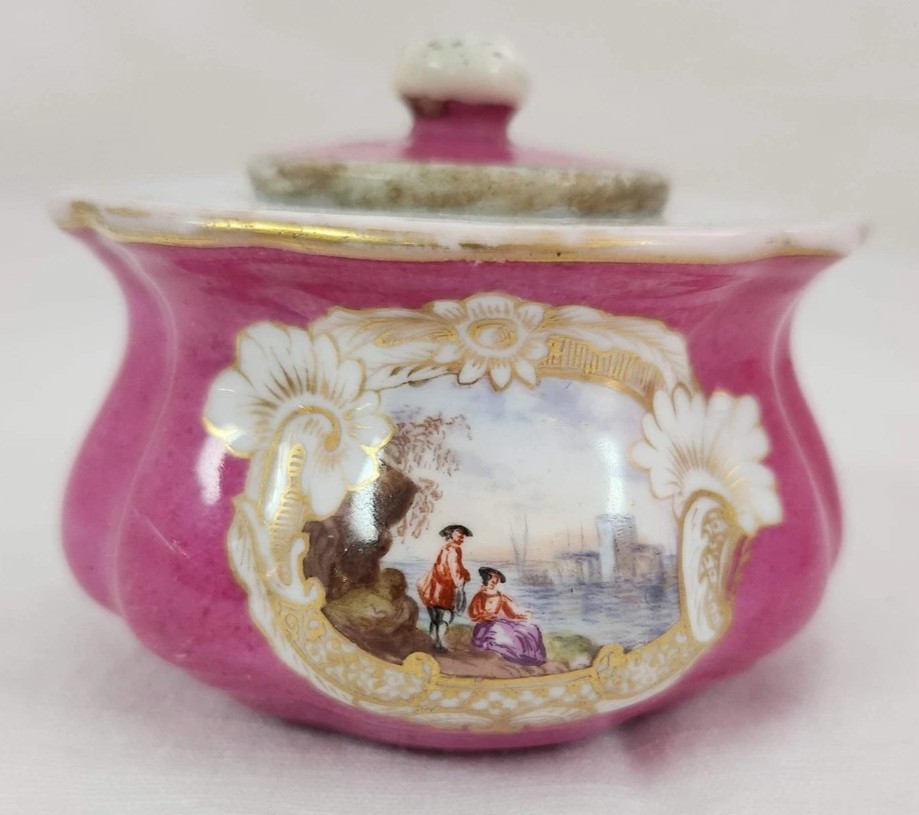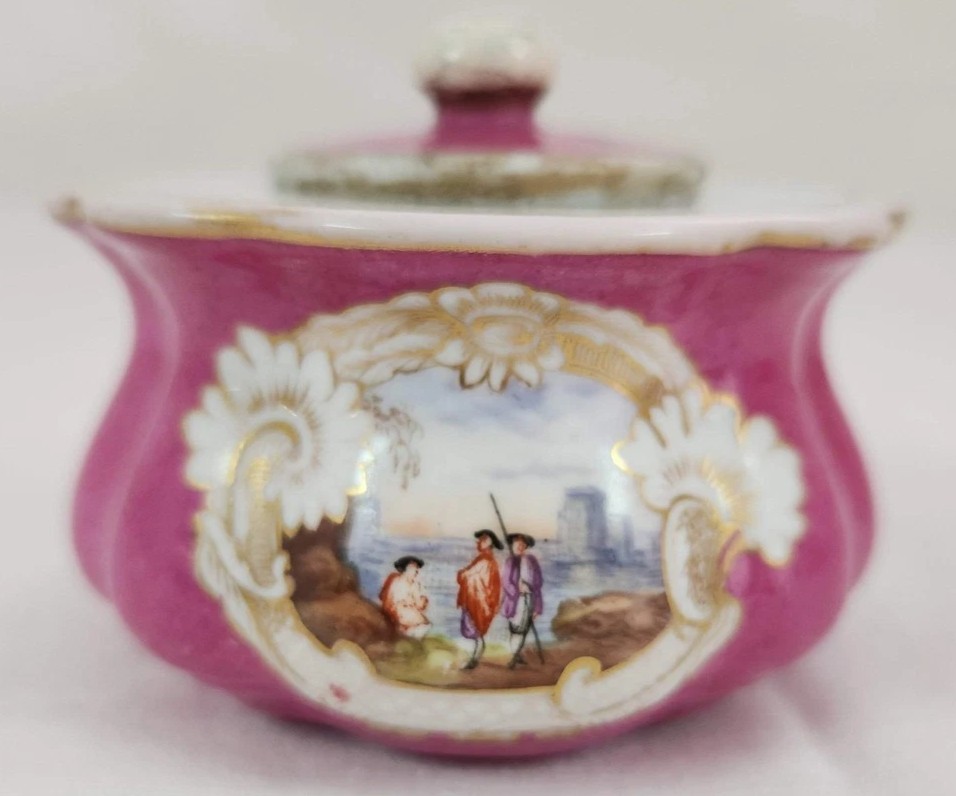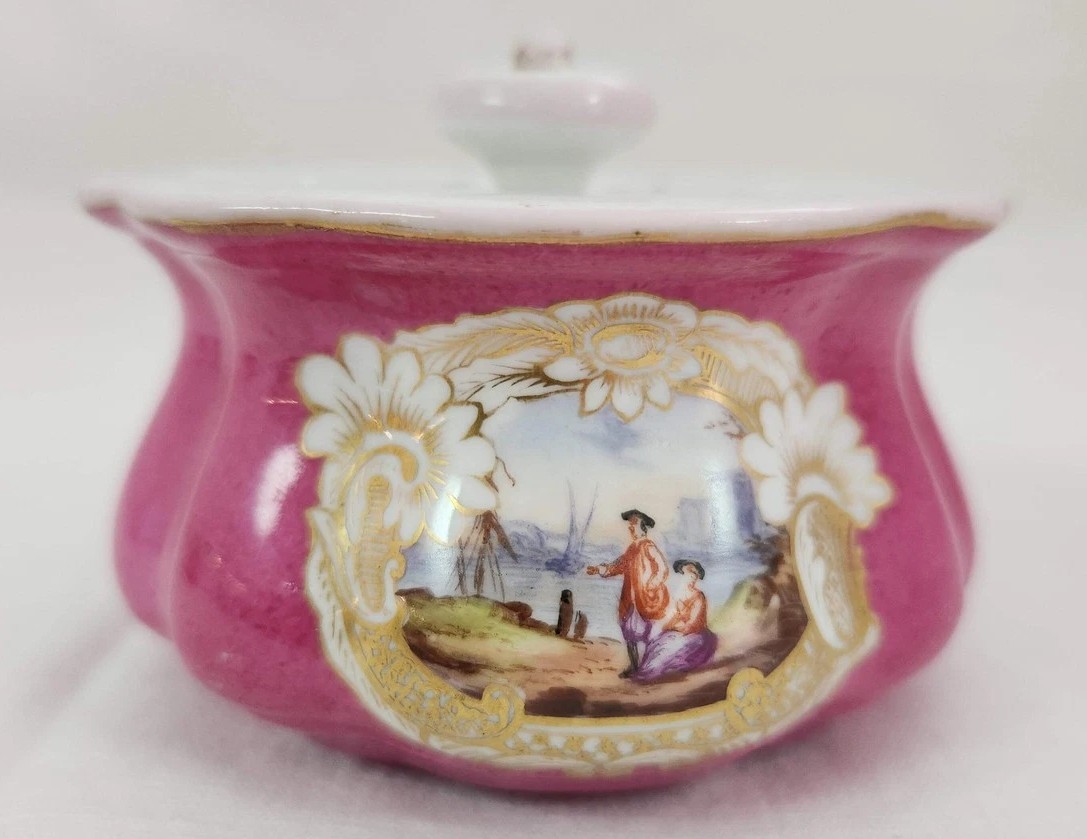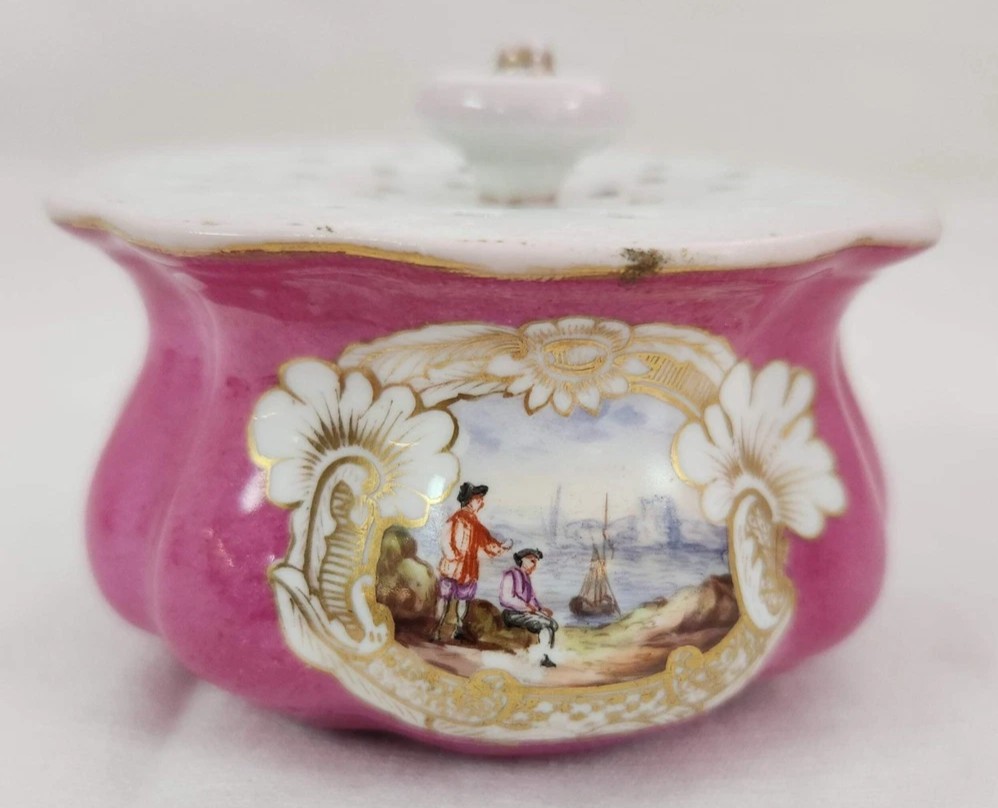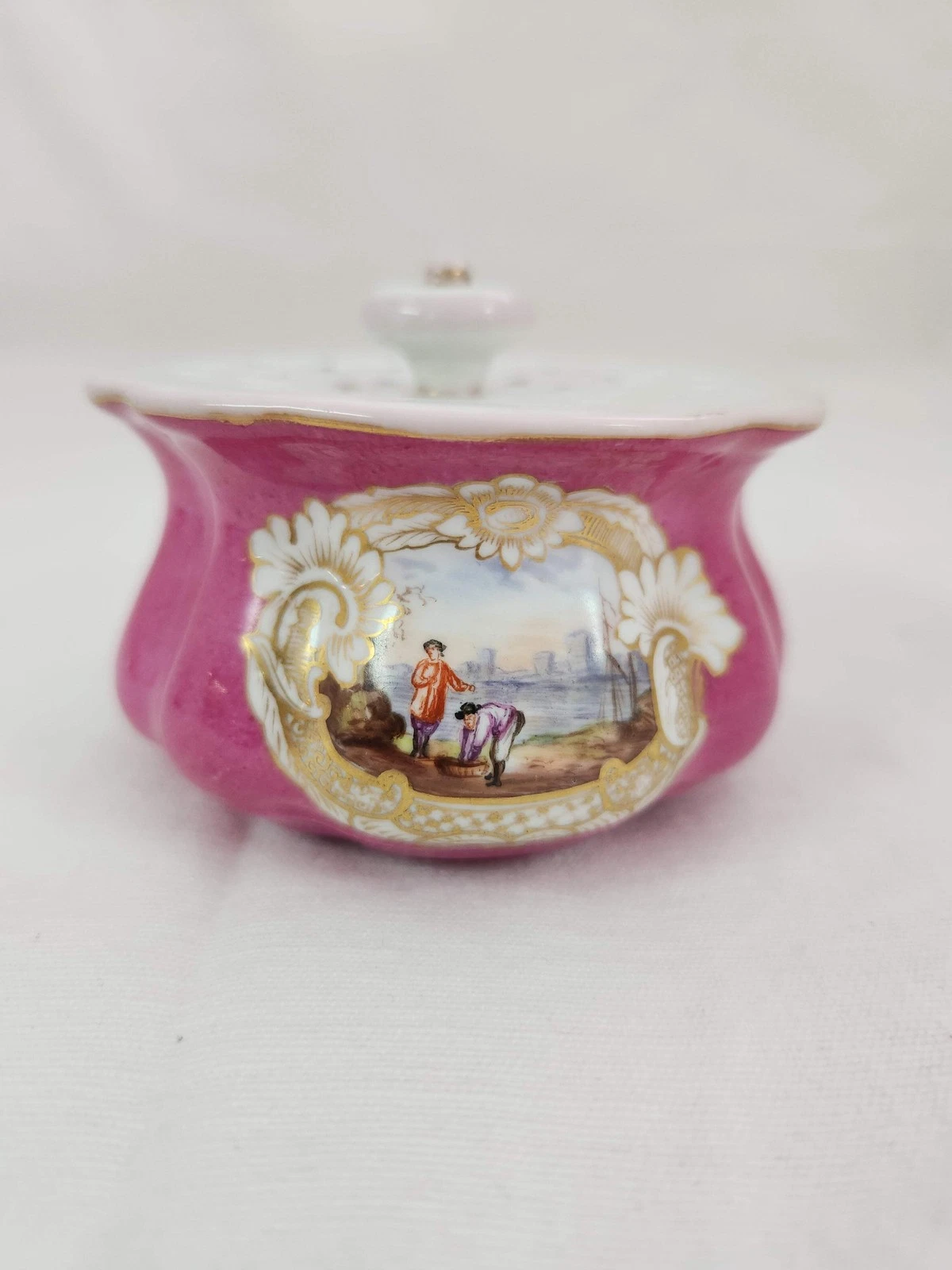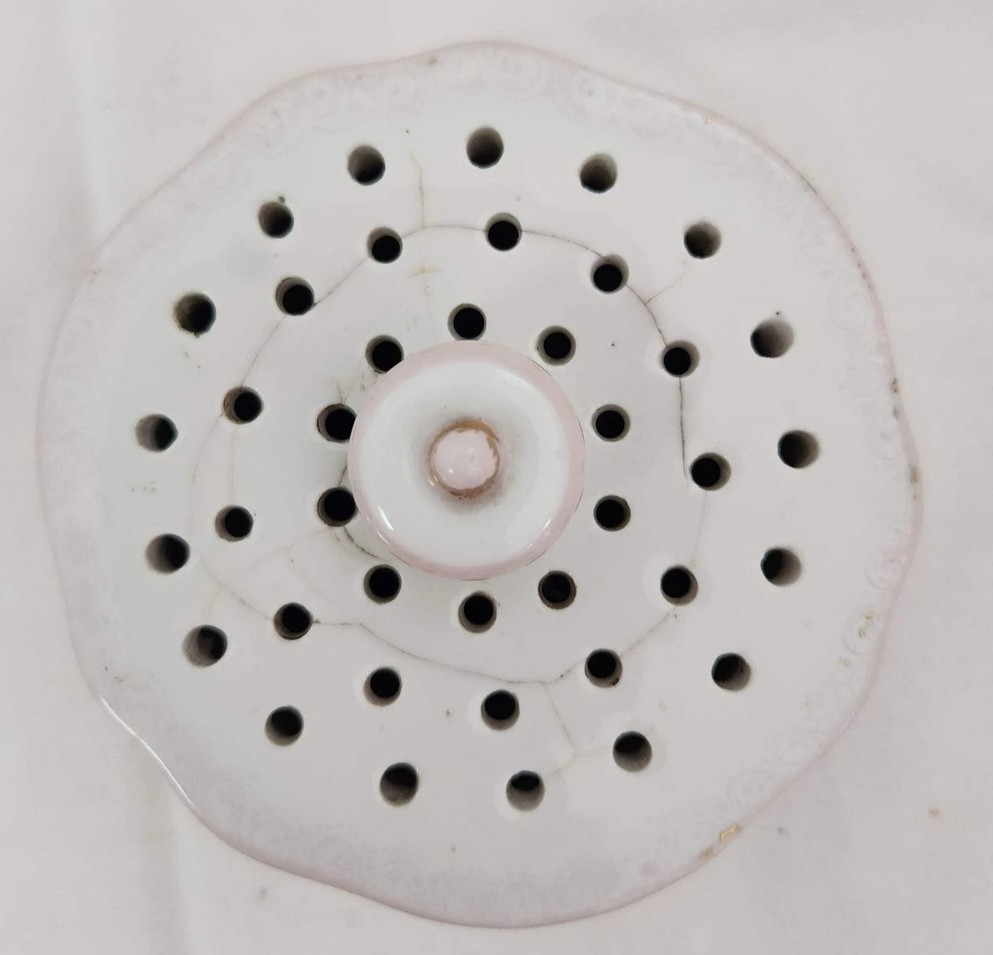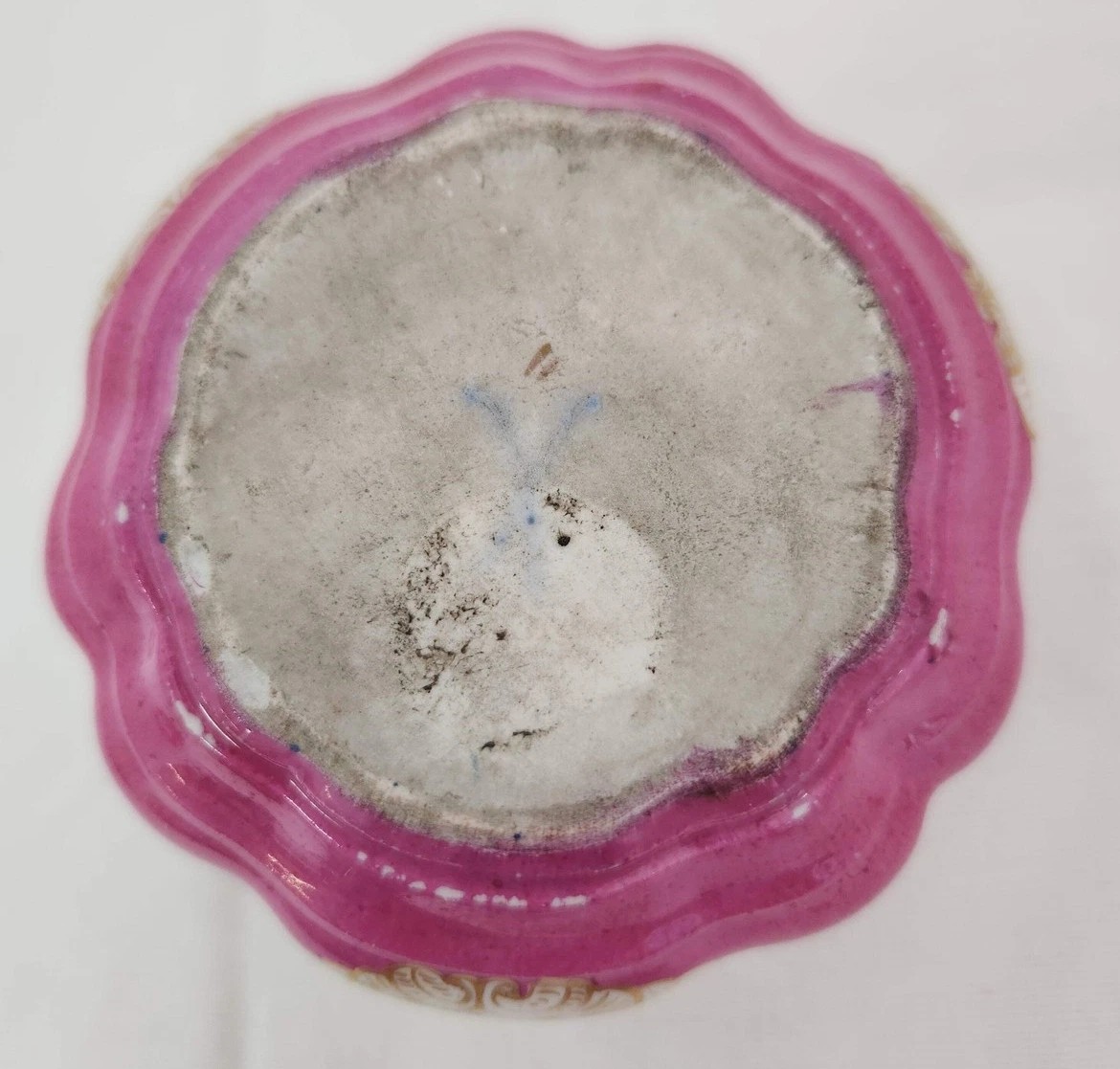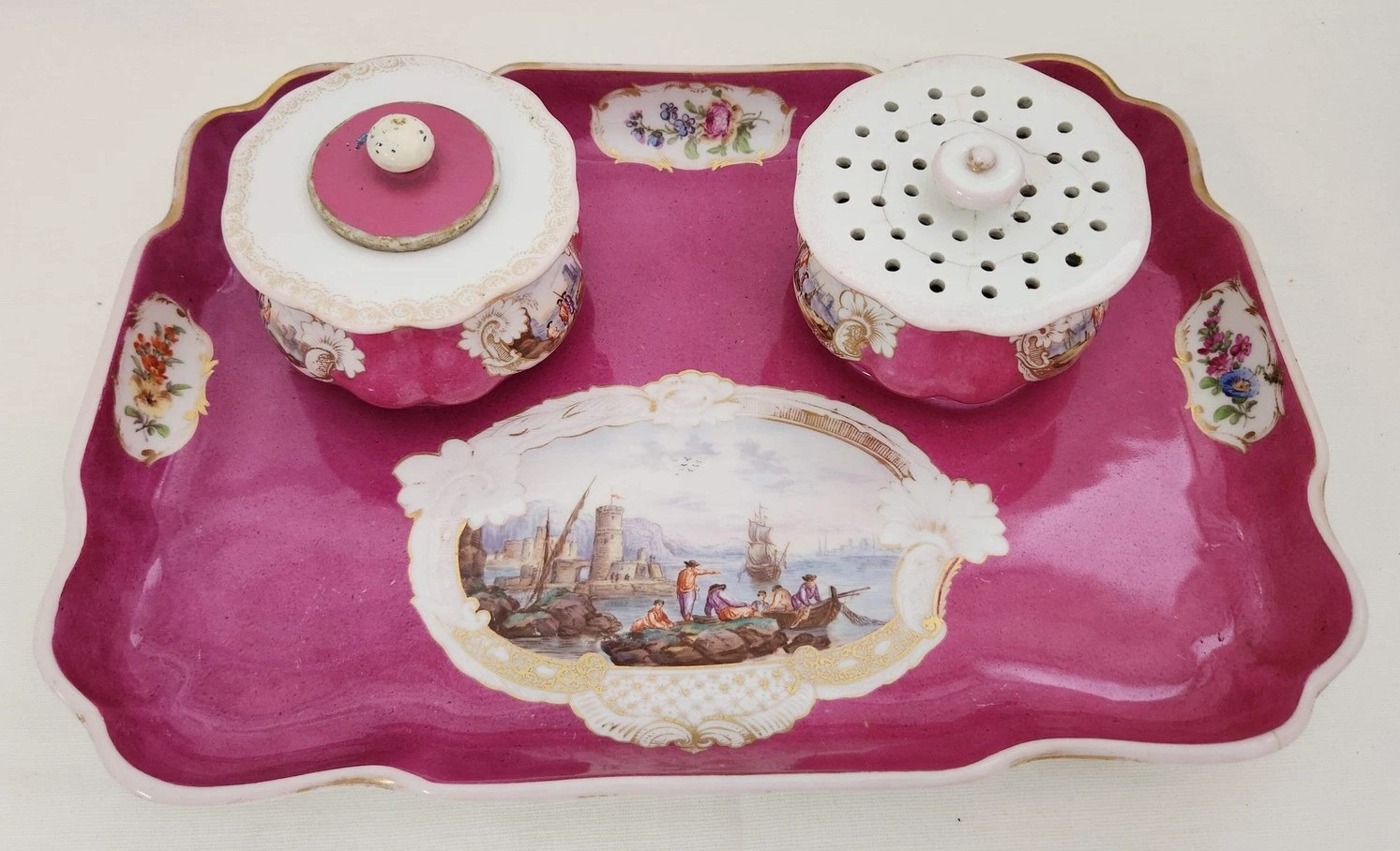
Meissen Three-Piece Desk Set
| Categories | Ceramics/Porcelain "Named" Makers |
| Material | Porcelain |
| Markings | See Narrative |
| Manufacturer | Meissen |
| Origin | Germany |
| Date or Era | circa 1800 |
This is a three-piece garniture de bureau (desk set), a classic luxury item from the 18th or 19th century. The set is notable for its rich color, intricate decoration, and masterful craftsmanship.
- Components: The set consists of a rectangular, scalloped-edge tray, a covered inkwell, and a matching covered pounce pot (or sander).
- Color and Decoration: The pieces are decorated with a Kakiemon style or Puce ground color (a vibrant magenta or purple-pink). This is a sought-after decorative style in Meissen porcelain. The background is punctuated by ornate, gilded Rococo-style cartouches with scrollwork.
- Hand-Painted Scenes: Within the cartouches are hand-painted scenes. The central scene on the tray depicts a fête galante, or an outdoor gathering, on a shoreline with a fortified town or castle in the background. The two matching containers feature similar small-scale landscape scenes, and the smaller cartouches on the tray are decorated with vibrant floral sprays.
- Function: The two containers are the inkwell and the pounce pot. The pounce pot’s lid has multiple holes to allow for the sprinkling of a fine powder or sand (pounce) over wet ink to dry it.
The Mark and Its Significance
The mark on the underside of the tray is a variation of the famous Meissen crossed swords mark, painted in underglaze blue. The specific mark features a dot-like element above the swords, which is a crucial detail for dating.
- Meissen Factory: This mark confirms the piece was produced by the prestigious Meissen porcelain factory in Germany, which was founded in 1710 and is the oldest porcelain factory in Europe.
Estimate of Age
Based on the combination of the decorative style and the mark, this desk set can be dated to the late 18th to early 19th century.
- Stylistic Period: The Rococo design of the gilded cartouches and the hand-painted fête galante scenes are stylistically rooted in the late 18th century, particularly during the period of Louis XVI and the Neoclassical transition. The vibrant magenta ground color was also a popular and expensive style of this time.
- The “Dot” Mark: While the classic crossed swords are a constant, the factory used specific additions to the mark to denote different periods. The addition of a dot, star, or dash is often associated with the late 18th and early 19th centuries, following the Marcolini period (1774–1814) when a star was used between the blades. This mark, with the dot above the swords, is a known variation.
Sold for $122 in July 2025
Content disclaimer. The information posted is the owner’s best knowledge and may not have been vetted by the SOIC. We welcome comments, corrections, and additions, working to make our website information comprehensive and accurate.
Join the Society of Inkwell Collectors (SOIC) – it’s free!
Founded in 1981 as a non-profit organization,
we are documenting inkwells (and accessories).
We’re here to help and inform!
